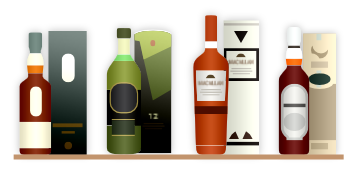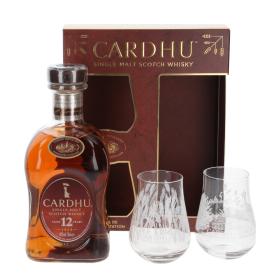Risks for collectors and connoisseurs
Counterfeit whisky is a serious problem - especially with old and rare collector's bottles. Time and again, bottles appear whose contents do not correspond to what the label promises. One of the best-known cases concerns counterfeit Macallan bottles, which shook the market.
Counterfeiters use various methods to deceive buyers - from imitation labels to tampered closures. Rare bottlings with high collector's values are particularly affected. But how can counterfeits be recognised? What measures are there to protect buyers?
We shed light on the background, highlight known cases of fraud and provide practical tips for identifying counterfeit whiskies.
The value of collector's bottles
Rare whisky collector's bottles are often valuable and can fetch high prices at auction. For example, the 49-year-old Dalmore L'Anima was auctioned for over £100,000 in 2019! Increasing values and rarity of individual bottles also lead to more counterfeit whisky. Particularly expensive bottlings attract counterfeiters.
Collectors should therefore exercise caution and carefully check the authenticity of purchased bottles, as many collectors have already fallen victim to counterfeiting.
A prominent case of counterfeiting: Macallan!
Even professionals can fall for fakes from time to time. A well-known case of whisky counterfeiting concerns Macallan. The distillery invested in the "Antique Whisky Collection" around 2000-2002 and unwittingly bought fakes! The allegedly old vintages that Macallan acquired via eBay came from Italy. Rumours of counterfeiting quickly spread!
Macallan then initiated an investigation into the alleged counterfeits. The bottles, which were supposed to be from the 1936-1945 vintages, were tested for authenticity in a very special way.
In 1945, the first atomic bombs fell in Hiroshima and Nagasaki. Artificial radioactive decay products were then released into the atmosphere. In the period that followed, from 1945 to 1965, nuclear bomb tests were carried out all over the world. This resulted in high levels of radiation around the world, which can still be measured today in small quantities everywhere - including in the barley and whisky produced after 1945. During the tests, radioactive decay isotopes were found in eleven of the Macallan bottles. The counterfeit was exposed and Macallan stopped selling it.
Forgeries today
Whisky counterfeiting is still widespread today, as cases of refilled bottles being sold as originals show. For example, an empty Ardbeg bottle was offered on eBay years later as a filled original bottle. Counterfeiters also use tricks with the closures: bottles are sealed with modified wine capsules that can only be recognised as counterfeit on closer inspection. In view of such methods, Macallan now relies on elaborate security features such as holograms on the bottle neck caps to make counterfeiting more difficult.
Nice story!
In the early days of 'The Whisky Store', Horst Lüning himself sold an empty bottle of Talisker in 1957 in his youthful recklessness. He got DM 15 for it back then! Who knows what became of that empty bottle.
Conclusion
Whisky.de does not buy collector's bottles, as the retail trade offers little profit margin and there is a risk of counterfeiting. Auction houses often charge high fees (15-25% of the proceeds) and offer no guarantee of authenticity. The probability of authenticity is higher with newer bottlings, but the risk of counterfeiting increases with age. Whisky should primarily be bought for enjoyment. Why not enjoy your whisky collection yourself - at the latest when you retire!
By the way: The bottles in the video are exhibition dummies.














To comment, you must be logged in